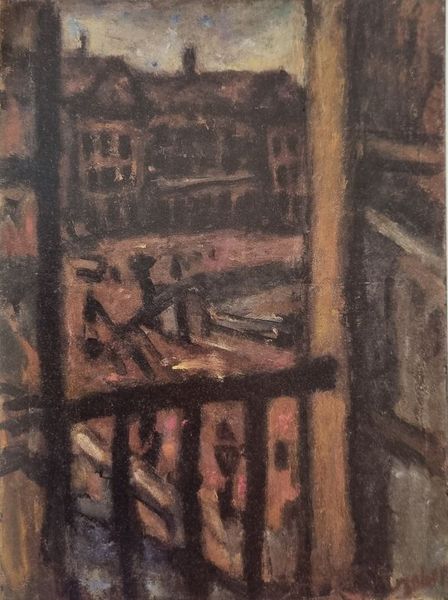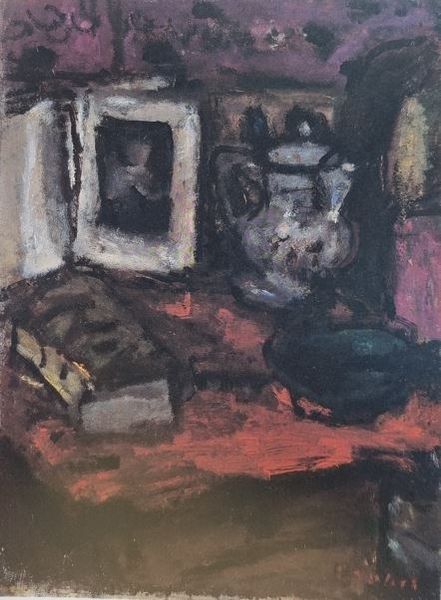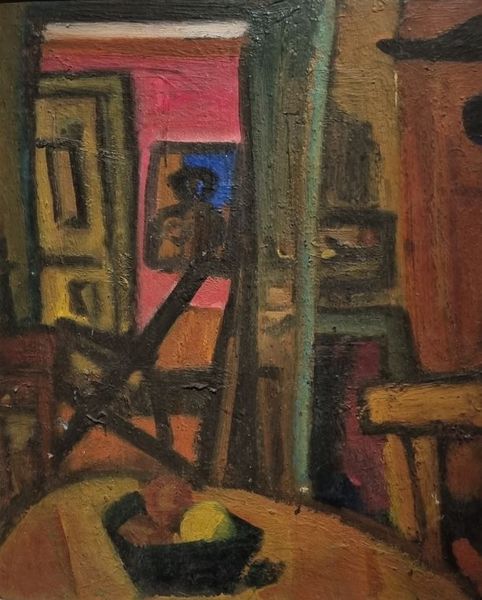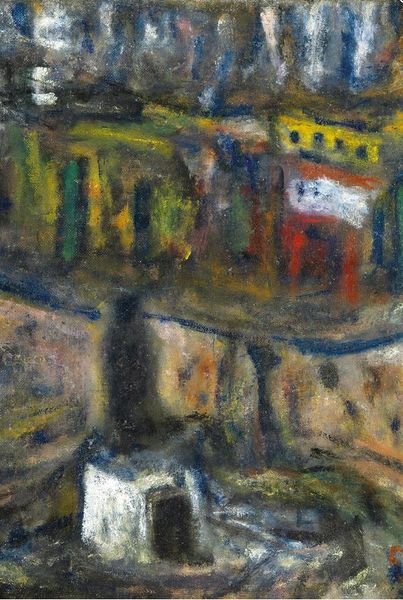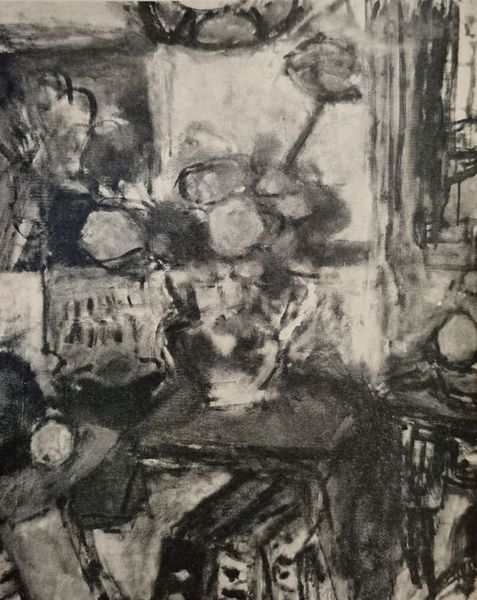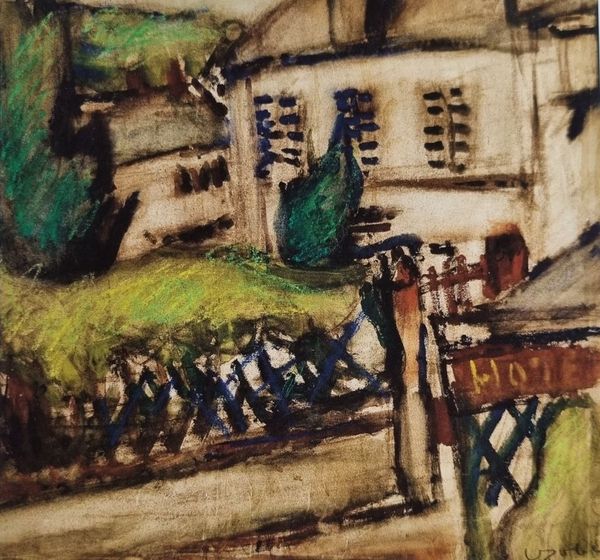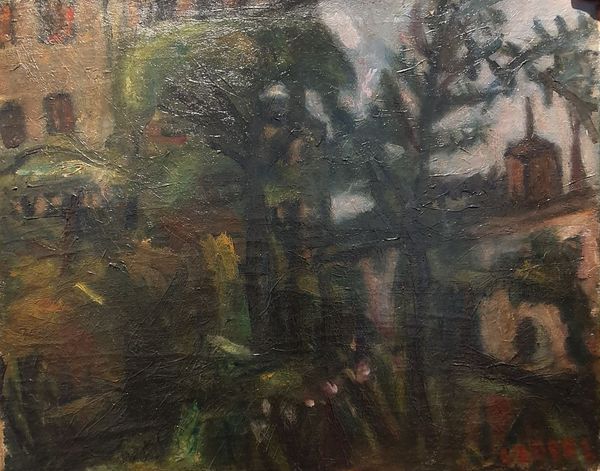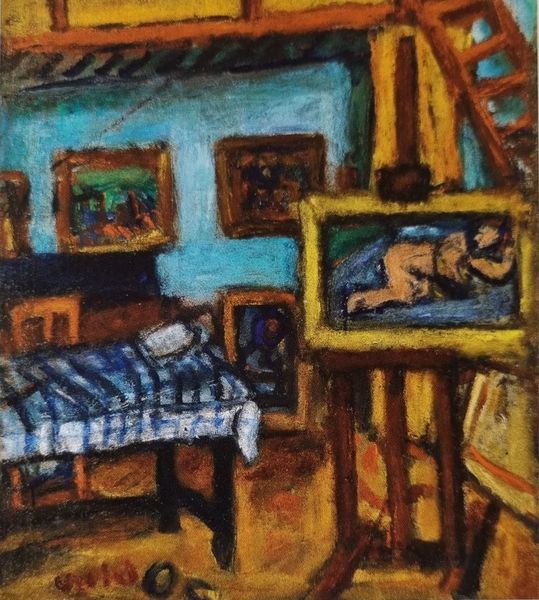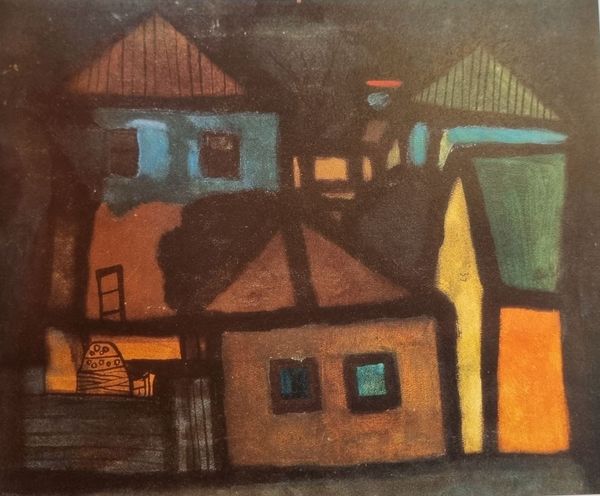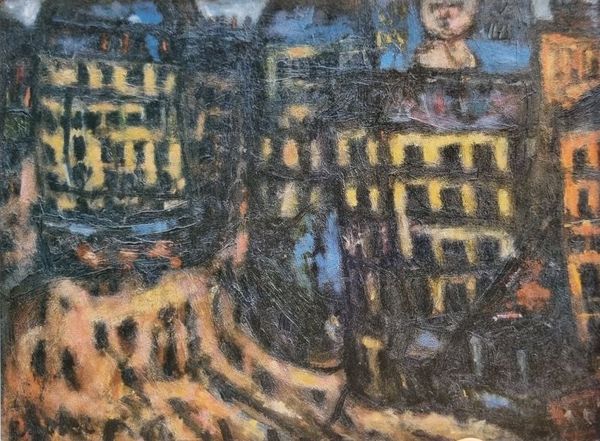
painting, oil-paint
#
painting
#
oil-paint
#
oil painting
#
genre-painting
#
modernism
Copyright: Bela Czobel,Fair Use
Editor: This oil painting, titled "Czóbel Béla Hatvani Kastély Interior 1930," presents a dimly lit room, almost claustrophobic in its composition. What's your interpretation of the visual language in this painting? Curator: Seeing this through a historical lens, I think Czóbel is capturing a very specific mood, perhaps symptomatic of its time. The restricted palette and subject matter hint at socio-economic realities following World War I and during the interwar period. Does this 'interior' feel inviting or confining to you, and why might that be? Editor: It feels quite confining. The darkness and limited visibility makes the viewer an outsider looking in, never fully entering. Curator: Exactly. Consider also the concept of "the gaze" at that time. How might the domestic space, typically a woman's domain, become a site of artistic observation and, perhaps, social critique by a male artist? The blurred distinction between public and private space seems significant, wouldn't you say? Editor: That's an interesting point. The private space is on display, but at a remove, like a stage set rather than lived space. It almost implies surveillance. Do you see an element of commentary on class as well, through what is depicted or not? Curator: Precisely! The relative lack of adornment or clear symbols of wealth, along with the dark palette, moves away from romanticizing the domestic and, instead, invites reflections on the anxieties and realities faced by people between the wars. I am also interested to examine how the political and exhibition climate impacted Czóbel’s choices as an artist, as Modernism began to permeate the region. Editor: That completely changes how I see it. It is a fascinating shift away from a purely aesthetic interpretation toward recognizing broader cultural and political contexts at play. Curator: And it emphasizes the dynamic relationship between the artwork and society, highlighting the public role art plays even within private depictions.
Comments
No comments
Be the first to comment and join the conversation on the ultimate creative platform.
